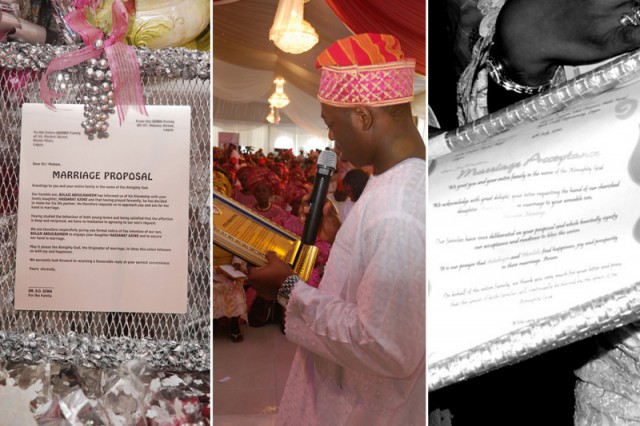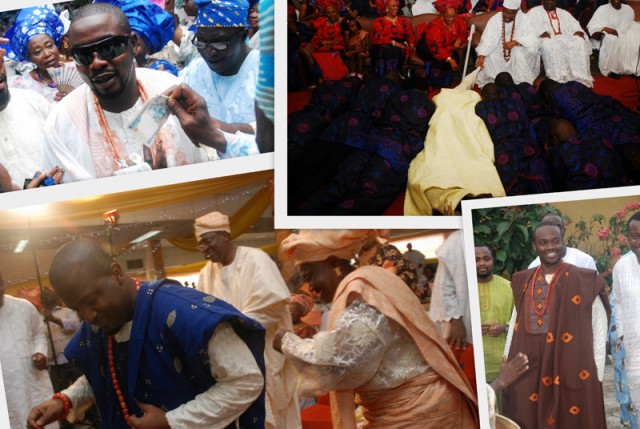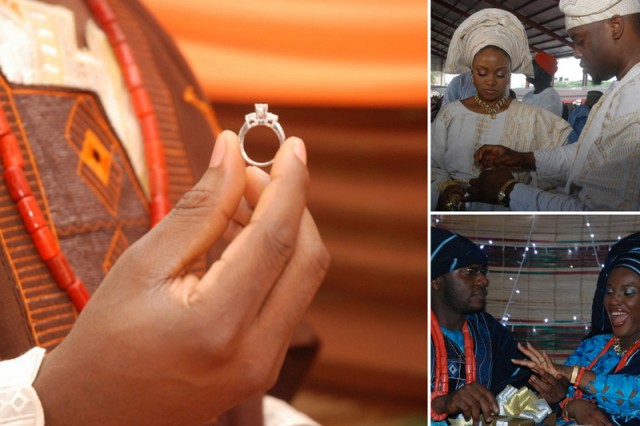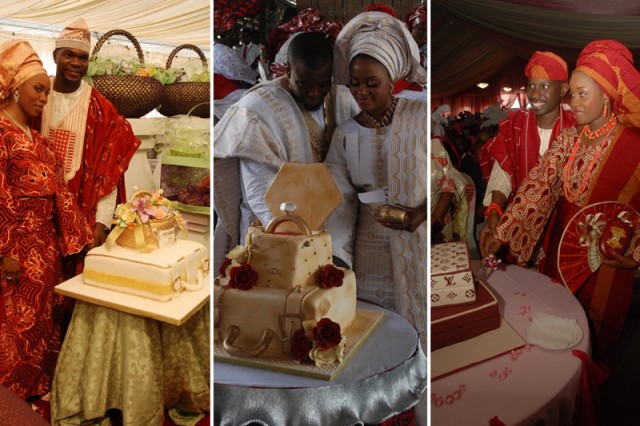Step 1: Welcome
The arrival of the grooms family signals the start of the ceremony, they are required to be on time (no ‘african’ time here) and can be sent back or fined for being late. Once inside, they are introduced by their Alaga and proceed to kneel and greet the brides family.
Step 2: The Proposal and Acceptance
This elaborate proposal ‘letter’ is presented by the grooms family and read out loud by the youngest member of the brides family. After which an acceptance letter is given by the brides family.
Step 3: Meet the Groom
The groom typically makes his appearance by dancing in with his friends then proceeds to prostrate two times with his friends and once alone to his new in-laws. During the third prostration, both families stretch out their arms and pray for the groom. He then prostrates once with his friends for his family before proceeding to his seat.
Step 4: Meet the Bride
The veiled bride makes her appearance escorted by her friends who dance her in. She kneels in front of her parents for their prayers and blessings, then does the same with her future husbands parents after which she is unveiled and joins her future husband. Though not compulsory, some brides put the grooms hat (fila) on his head, this demonstrates her acceptance of the proposal.
Step 5: Bling Please
On instruction from the Alaga Ijoko she picks the gift she wants from the usually dazzling selection brought by her in-laws (a list with the required items would have been given prior to the engagement). She is expected to pick the Bible or Qu’ran to which her engagement ring is attached. She gives her selection to her husband who puts the ring on her finger and watches happily as she shows off her ring to the world.
Step 6: Bride Price
Various envelopes containing everything from the bride price to money for the wives, children and elders in the her family are handed over to the brides family. It is very common practice for them to the envelope containing the bride price, the belief is that both families have become one and are giving their daughter away versus ‘selling’ her.
Step 7: Cut the Cake
The engagement cake also known as ‘Akara Oyinbo’ is a symbol of happiness due to its rich and sweet ingredients. The more recently introduced cake cutting ceremony is usually for photo opportunities.
Step 8: Party Party Party
Final prayers are said and the occasion is ended with lots of love, eating, music and dancing!
Yoruba Engagement List (varies slightly from family to family and Yoruba state to state)
42 Big Tubers of Yam
42 Big Cola Nuts
42 Big Bitter Cola (Orogbo)
42 Pieces of Dry Fish
42 Pieces of Alligator Pepper (Ata’re)
2 Bottles of Honey
2 Pairs of Shoes and Bags
2 Scarves
1 Wrist Watch
1 Bible or Qu’ran
1 Engagement Ring
1 Big Suitcase
1 Traditional Aso-Oke
1 Big Dish of ‘Aadun’
1 Bag of salt
1 Bag of Sugar
1 Umbrella




